Kwon Ti Lakhang, also known as “Guandi Temple” or “Gesar Lakhang,” is a Gelug Pa temple of Tibetan Buddhism.
Due to the resemblance between the image of Guandi and the ancient Tibetan hero “King Gesar” from the Tibetan epic, locals refer to it as “Gesar Palace” or “Gesar Lakhang.”
In 1792 AD, during the Qing Dynasty, General Fuk’anggan funded the construction of this Guandi Temple. It is currently the largest and best-preserved Guandi Temple in the Tibet Autonomous Region.
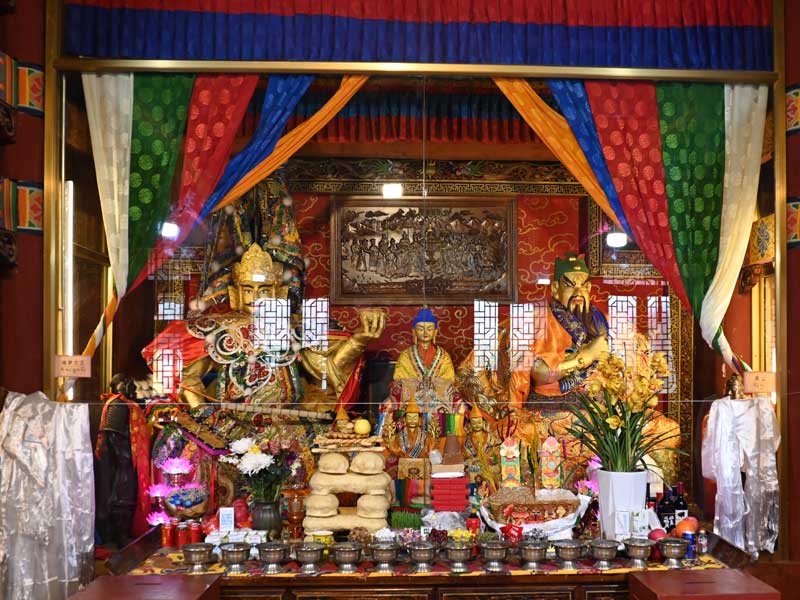
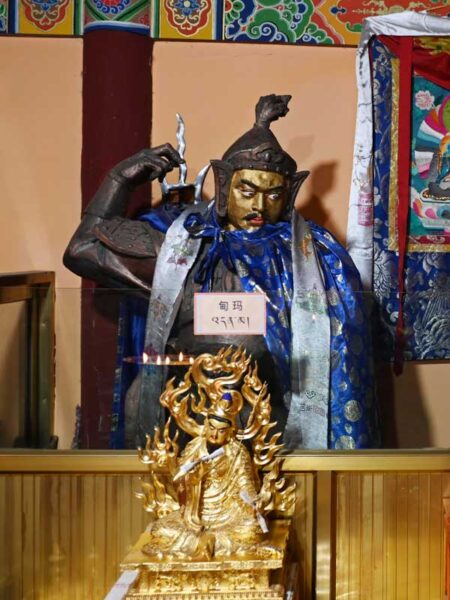
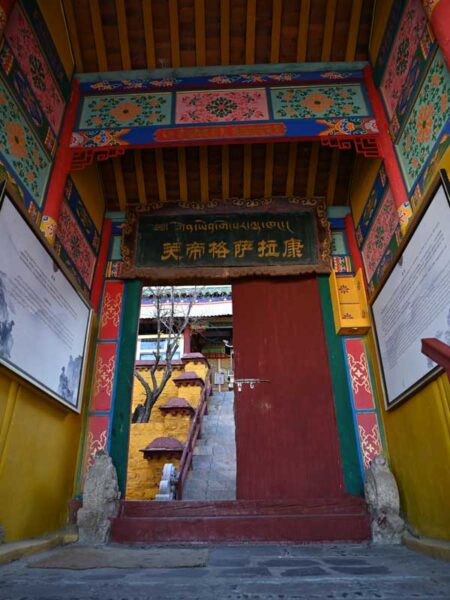

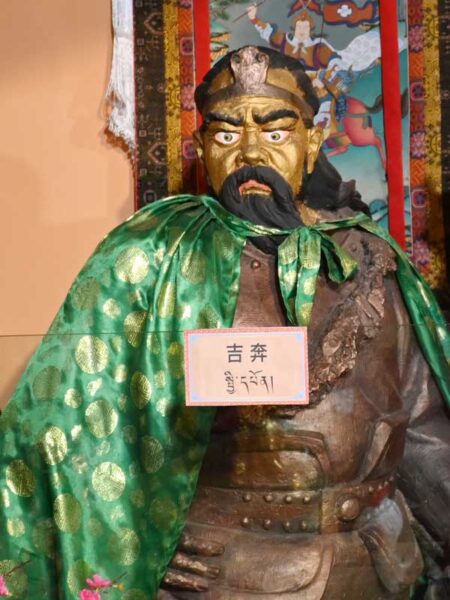
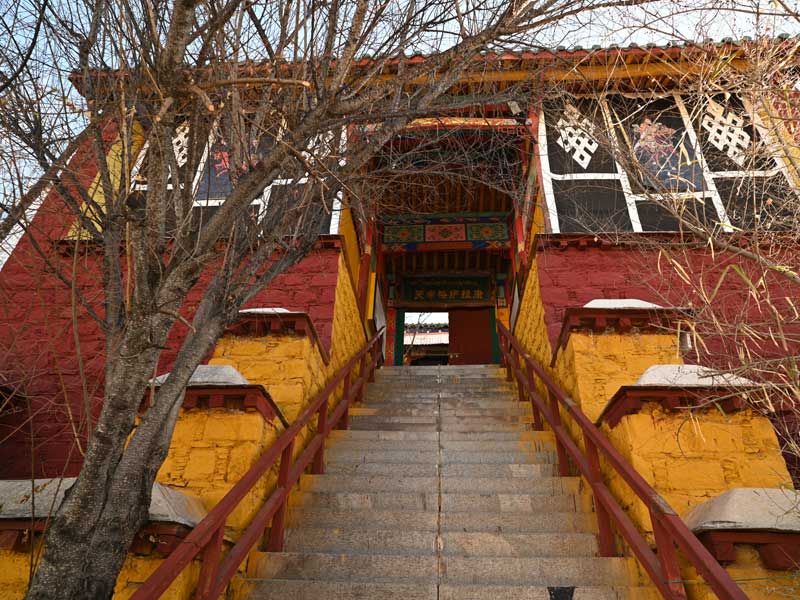
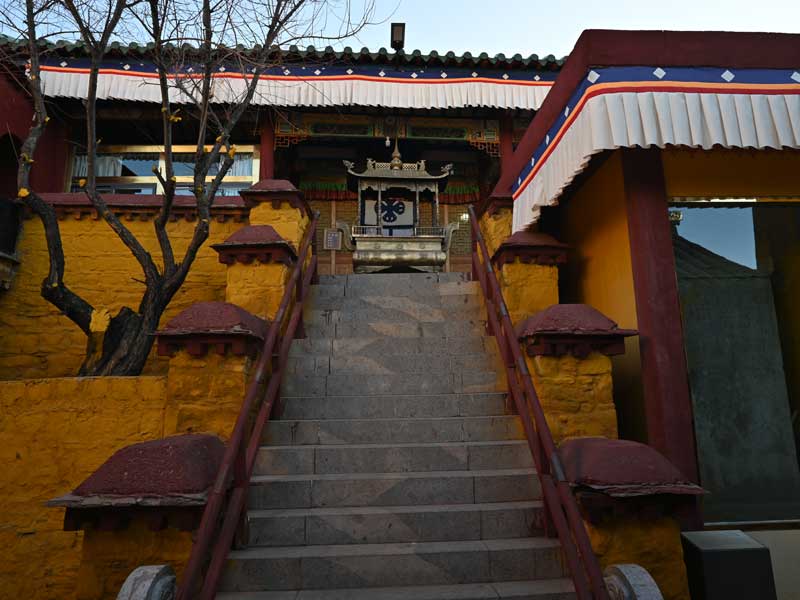
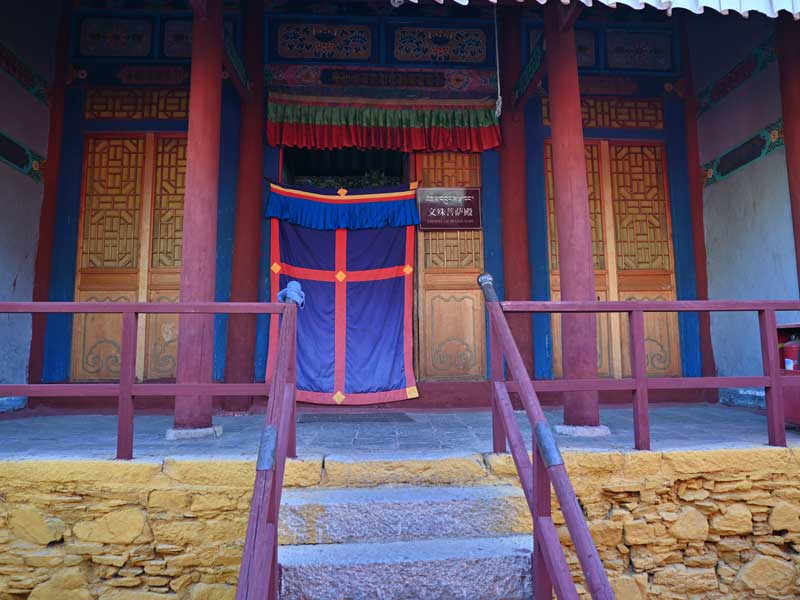
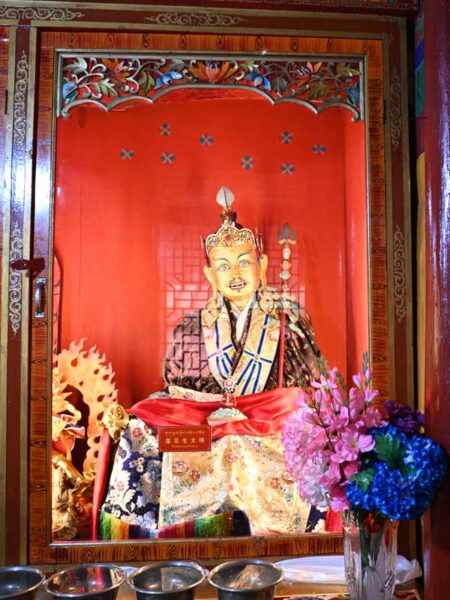
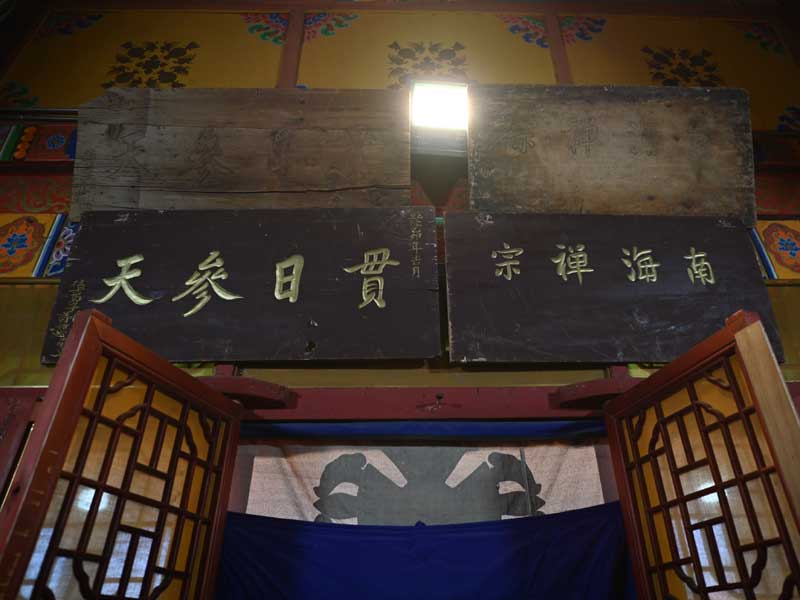
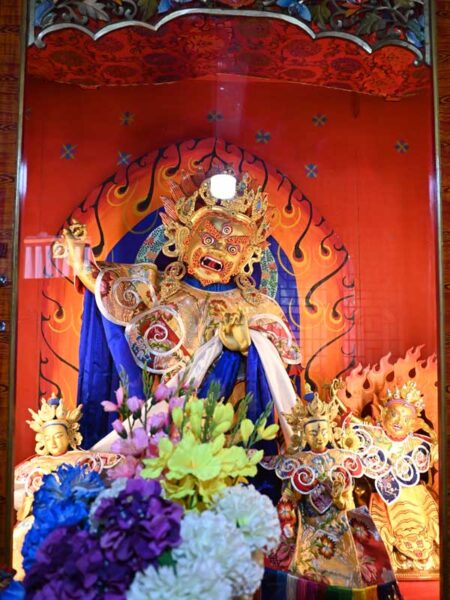
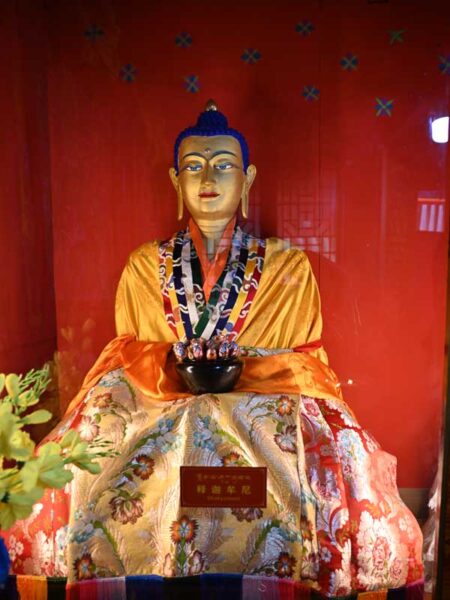
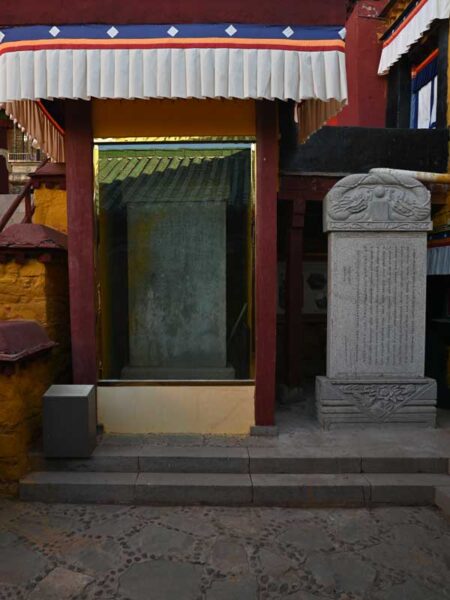
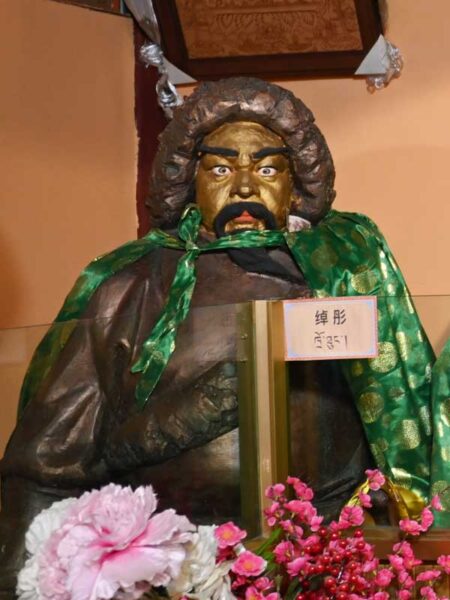
Kwon Ti (Guandi)
Guan Yu (circa 162-220 AD) was a renowned general of Shu-Han kingdom (221 AD – 263 AD) during the Three Kingdoms period (220 AD – 280 AD).
Posthumously revered by the people, he was deified over successive dynasties and worshipped as the “Saint of War” or “Guandi” in Chinese.
In Buddhism, he is known as the “Guardian Bodhisattva” and is respectfully called “Guan Gong.” He is revered as the “Saint of War,” alongside Confucius, the “Saint of Culture.”
The deification of Guan Yu as “Guandi” in Chinese Taoism has no direct connection with the Tibetan Buddhism
Overview
The Guandi Temple is situated about one kilometer southwest of the Potala Palace on Mopanshan hill in Lhasa, facing south. Originally called Bamarir Mountain, it was renamed Mopanshan by the Qing officials stationed in Tibet because its shape resembled a millstone. In 1791 AD, the Gurkha army invaded Tibet. The following year, Qing General Fuk’anggan led Qing forces into Tibet and expelled the Gurkhas with the cooperation of local troops. After the victory, Fuk’anggan oversaw the construction of the Guandi Temple on Mopanshan and erected a stele commemorating their victory. The Qianlong Emperor personally inscribed a plaque for the temple.
The main structures of the temple include the mountain gate, courtyard, monk quarters, main hall, Janyang Lakhang (known as the “Manjushri Hall” in Chinese), and side rooms. The main hall houses statues of Guan Yu, Zhuge Liang, and Guan Ping, while the Janyang Lakhang enshrines Manjushri Bodhisattva.
Due to years of neglect, the temple fell into disrepair. Restoration began in 2007, led by the Lhasa Cultural Relics Bureau and other organizations.
On March 23, 2007, a groundbreaking ceremony for the restoration project was held in Lhasa. Chinese communities from around the world donated statues of Guandi and other items to the temple. The restoration included comprehensive repairs and environmental improvements to the mountain gate, courtyard, main hall, steles, plaques, wall paintings, parking lot, and driveways.
On May 22, 2007, the Lhasa Guandi Temple was designated as a Cultural Relic Protection Unit of the Tibet Autonomous Region.
In December 2007, the Lhasa Municipal Government erected a monument at the temple entrance, officially naming it the “Lhasa Guandi Lakhang” Cultural Relic Protection Unit. The temple is managed by monks from Kundeling Monastery.
Mopanshan Stele
The Mopanshan Guandi Temple Stele, located just inside the temple gate, was erected in 1793 AD. The stele is 3.04 meters tall, 1.18 meters wide, and 0.29 meters thick. The top features a bas-relief of two dragons playing with a pearl, with the inscription “Eternal Glory” in seal script. The rectangular base of the stele is 1.35 meters long. The front of the stele is decorated with cloud patterns, and the main text is in regular script.
Architecture
The Mopanshan Guandi Temple is a Han-style building covering 800 square meters. It faces south and is built on a hill. Visitors enter through a long stone staircase on the south side into a square courtyard. On the east and west sides of the courtyard are two-story buildings: the lower level serves as monk quarters, and the upper level is used for guest reception and office space.
From the north side of the courtyard, a flight of 12 steps leads to the main hall, which measures 12.5 meters wide by 9.7 meters deep and has six columns. The hall features a beam structure inside and Tibetan-style stone walls outside, with red clay ridge ornaments and red glazed roof tiles, creating an impressive appearance. The hall enshrines a statue of Guan Gong, depicted with a red face, holding a large blade, and riding a red horse.
Originally, over 50 plaques with gold inscriptions praising Guan Gong were hung in the hall, of which 13 remain. Most were erected by Qing officials and soldiers stationed in Tibet, with powerful calligraphy and engraving techniques of both positive and negative relief, possessing historical and artistic value.
Behind the main hall is the Janyang Lakhang, meaning “Manjushri Hall.” Its architectural style is similar to the main hall, with large tiles, cylindrical tiles, and flat tiles used for the roof. The eaves feature tile ends with cloud patterns and the character for “longevity” in seal script. The cylindrical tiles are decorated with cloud and spiral patterns, while the flat tiles feature floral designs. Small holes in the tiles allow them to be fixed with nails.
Inside the hall are clay statues of Manjushri Bodhisattva, Padmasambhava, several protectors of Tibetan Buddhism, and a thousand-armed Avalokitesvara. It is said that there were originally two large bells hanging above the main gate and two clay horses on either side of the courtyard. A bronze bell, cast in 1793 AD by Fuk’anggan and Qing soldiers, was once located on the east side of the main hall but is now housed in the Tibet Museum.



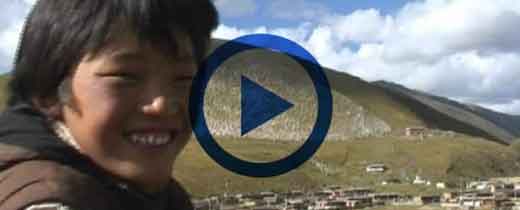

Leave a Reply